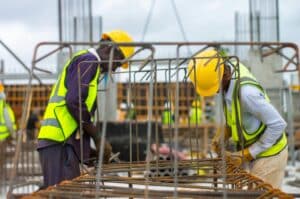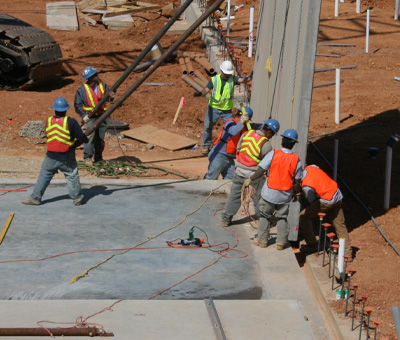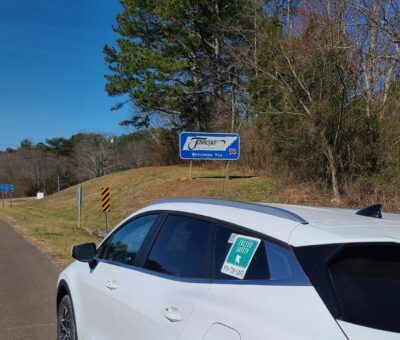For construction, safeguarding the lives of workers is not just a regulatory mandate but a moral obligation. As the construction industry grapples with the persistent challenge of fall-related fatalities, the importance of proper fall protection measures becomes increasingly evident.
Data from 2020 reveals a stark reality: out of 1008 construction fatalities, 351 were due to falls to a lower level. These numbers, sourced from the Bureau of Labor Statistics (BLS), are a somber reminder that these deaths are not mere statistics but preventable tragedies.
In response to this critical issue, the construction industry has turned to both technology and innovative strategies to enhance worker safety. Yet, amidst these advancements, many companies still cling to the concept of the Alternative Fall Protection Plan (AFPP) rather than embrace new technology or processes.
The AFPP, as outlined in OSHA 1926.501, presents itself as a viable option. However, its complexity and the requirement for continual upkeep and compliance with OSHA standards underscore the plan’s intricate nature, highlighting a resistance to change in the face of emerging solutions.
This article offers a comprehensive discussion on the significance of AFPP in the construction industry, highlighting both the urgency of the issue and the complexity involved in implementing these plans.
Overview of OSHA Standards on Employer Obligation
The Occupational Safety and Health Administration (OSHA) sets forth stringent standards for construction safety. Central to these is the General Duty Clause, an overarching requirement that compels employers to provide a work environment devoid of recognized hazards likely to cause death or serious harm.
When it comes to fall protection, 29 CFR 1926.501 regulation specifically mandates employers to furnish fall protection systems that adhere to the criteria detailed in 1926.502. This includes, but is not limited to, the provision of personal fall arrest systems, safety net systems, or guardrail systems for employees working on surfaces like formwork, reinforcing steel, or leading edges.
A crucial aspect of these standards is the presumption that traditional fall protection methods are generally feasible and do not introduce additional hazards. Employers are expected to use these standard methods unless they can demonstrate that an alternative approach, compliant with 1926.502(k), is more suitable for their specific workplace situation.
This directive places significant responsibility on employers to not only ensure fall protection but also to critically assess the suitability of standard methods and, if necessary, develop and maintain an alternative plan that offers equal or greater safety for their workers.
Alternative Fall Protection Plans Under OSHA 1926.502
Under OSHA 1926.502, AFPPs are applicable “only to employees engaged in leading edge work, precast concrete erection work, or residential construction work who can demonstrate that it is infeasible or it creates a greater hazard to use conventional fall protection equipment”. This delineation is crucial, as it recognizes the unique challenges and risks inherent in these types of work, where standard fall protection measures may not suffice or could even exacerbate hazards.
In addition, the fall protection plan shall be prepared by a qualified person, developed specifically for the site, and be kept up to date. The definition of a ‘qualified person’ is precise, referring to someone with recognized credentials or extensive experience capable of resolving problems related to the subject matter, work, or project.
Furthermore, the AFPP must be a living document, adaptable and responsive to the evolving nature of the construction site. Any changes to the plan are subject to approval by a qualified person, ensuring that the plan’s integrity and efficacy are maintained. The plan must also be readily available at the job site, reflecting all approved changes.
Lastly, the implementation of the AFPP is entrusted to a ‘competent person,’ defined as someone capable of identifying existing and predictable hazards and authorized to take corrective measures to eliminate them.
Essential Components of an AFPP
Each Alternative Fall Protection Plan must be comprehensive and contain clearly defined elements that collectively ensure a high standard of safety is maintained throughout the construction process:
- Responsibility Assignment: The plan must specify who is responsible for implementing and overseeing various fall protection measures, including emergency response. Clear definitions of fall protection terms and procedures are crucial for shared understanding among all personnel.
- Company Safety Policy: The AFPP should include a detailed company policy on fall protection, reflecting commitment to safety and adherence to OSHA standards. This policy guides the actions and expectations on the construction site.
- Training Protocols: The AFPP must specify the type and extent of training for workers and supervisors, encompassing the use of fall protection equipment, hazard recognition, and emergency protocols.
- Pre-Work Safety Meetings: Regular safety meetings prior to work are essential. These sessions reinforce the AFPP’s guidelines, update employees on specific site hazards, and address any concerns or changes in the work environment.
- Documentation: Thorough documentation is vital and must detail the reasons why conventional fall protection methods are deemed infeasible or why they could create a greater hazard in specific situations. Additionally, the plan should include a written discussion of the alternative measures taken, such as the use of scaffolds or ladders, to mitigate fall hazards.
Site-Specific Considerations and Feasibility Studies
The effectiveness of an AFPP is closely tied to how well it addresses the specific characteristics of each construction site. Customization of the AFPP to the site’s unique layout, conditions, and activities transforms it from a generic guideline into a practical, site-specific strategy.
Integral to this tailored approach are conducting feasibility studies. These studies form the backbone of the AFPP, providing a well-reasoned, evidence-based foundation for the alternative fall protection strategies employed. Key considerations in this process include:
- Assessing Worksite Constraints: Evaluating whether physical fall protection methods, such as guardrails or safety nets, are viable given the site’s physical layout and the nature of the work being performed.
- Alternative Safety Measures: If standard methods are found impractical, the study must explore alternative means of mitigating fall hazards. This might involve the use of specialized equipment or modified work practices.
- Risk of Greater Hazards: The study should analyze if the implementation of conventional fall protection could inadvertently introduce greater risks. For instance, certain safety equipment might obstruct movement in tight spaces, potentially leading to other types of accidents.
- Documentation of Findings: All conclusions and decisions derived from the feasibility study must be thoroughly documented within the AFPP. This includes detailed explanations of why standard fall protection methods were deemed infeasible or hazardous in specific scenarios and the rationale behind the chosen alternative measures.
Implementing and Adapting the AFPP
The successful implementation of an AFPP requires more than just thorough planning; it necessitates vigilant execution and adaptability. The dynamic nature of construction sites means that the AFPP must be actively monitored and updated. Regular reviews are essential to ensure the plan remains effective and relevant, adapting to evolving site conditions, changes in work practices, and the introduction of new equipment. This constant vigilance helps maintain the plan’s effectiveness in reducing risk.
In addition, a critical component of the AFPP is its incident response protocol. In the event of a fall or a near-miss, it is crucial to conduct a thorough investigation to uncover the underlying causes of the incident. This investigation should assess whether the AFPP was correctly followed, identify any unforeseen hazards, and pinpoint any inadequacies in the plan. Based on these findings, modifications to the AFPP may be necessary to prevent similar incidents in the future. This iterative process, in accordance with OSHA’s directive, ensures that the AFPP is not a static document but a living tool that evolves based on real-world experiences and contributes to a safer work environment.
Overall, Alternative Fall Protection Plans are not just regulatory necessities; they are fundamental to fostering a culture that values and protects its workforce in the face of complex and varied construction site challenges.
Building Safety from the Start with Prevention Through Design
In workplace safety, the best results come from stopping hazards before they ever reach employees. While training, procedures, and personal protective equipment (PPE) are important, the most effective approach is to design hazards out of the workplace from the beginning. This approach is known as Prevention through Design (PtD). What is Prevention through Design? Prevention…
Continue Reading Building Safety from the Start with Prevention Through Design
Emergency Preparedness: Staying Ready
Whether a misstep causes a fall or a natural disaster causes an evacuation, emergencies happen. Emergency preparedness and response can mean the difference in avoiding an injury or ending with a fatality. Emergencies come with little to no warning. While we may think these are extreme situations that will “never” happen to us, the reality…
Continuous Improvement and Immersive Training in Action
Construction is a dangerous business. Risks are constant, standards shift, and complacency can be deadly. For Jennifer Lastra, a U.S. Navy veteran and current CEO of 360 Immersive, corporate-style training falls far short. True safety begins with continuous improvement, supported by real engagement on the job. Training Should Go Beyond a Click-Through Box “Corporate training…
Continue Reading Continuous Improvement and Immersive Training in Action











